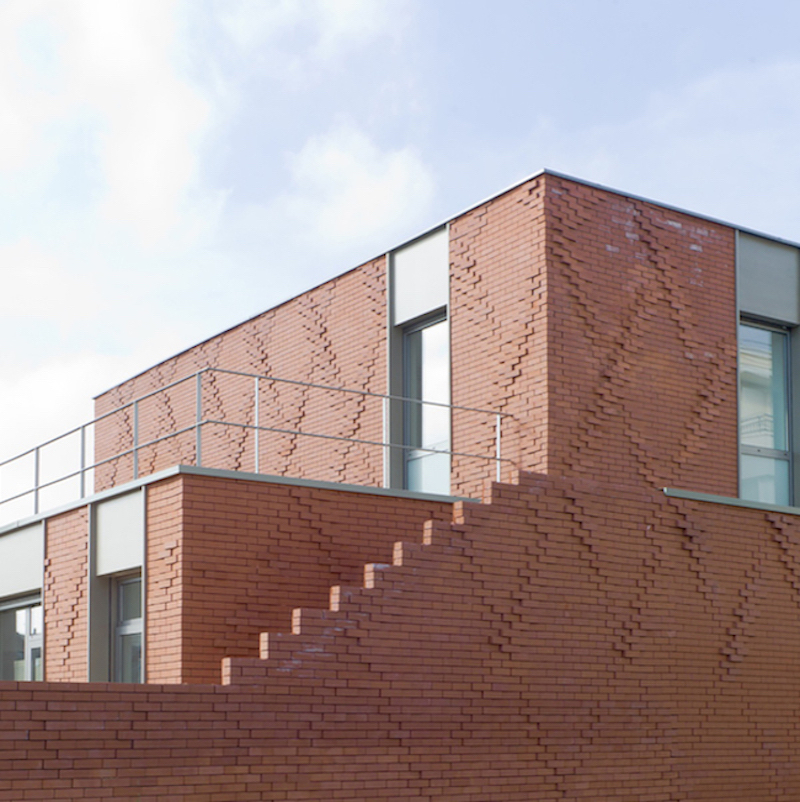BEAUVAIS, France — A number of things are coming together currently to breathe new life into brick. More and more we’re seeing brick used as a cladding material. That’s the case in the city of Beauvais, France, where the Ellenamehl studio made brick one of their defining features in the “House for Solidarity,” a social work space and community gathering place, complete with offices and gardens.
The crisscrossing threads of brick that adorn the facade of the house happened through 3D modeling and parametric design. The more examples we see of this type of work, the more we think back to a project by Structural Oscillations that used a robot to build a brick wall. The image of technology weaving these precise and complicated patterns in brick seems illustrative of the entire trend right now.
The pattern has a purpose beyond showing the studio’s techy finesse. According to Inhabitat, Beauvais is a region known for it’s weaving, and so the 38,000 bricks evoke patterns one may see on textiles. By linking the Home to its location, it also links the people who visit to the location.
Because the area apparently has some history. The architects told ArchDaily that the building is located on a former military base, erected in 1870. It’s been abandoned (the architects called it “a wasteland,” which could be a translation thing, but we like the hyperbole) since 1993. That section of the city is in a renewal phase right now, and the architects state that there are new projects to create urban communities, offering more local services and reducing social problems. From Inhabitat:
The House for Solidarity, in line with the revitalization philosophy, was designed and built as a step toward pacifying and diversifying the area. The public ground floor of the building welcomes visitors with a wide reception counter and provides access to the garden patio, meeting rooms and a mother and child care area, while the first floor houses the social workers’ offices.
This is all very interesting to us, because it makes the design seem all the more dynamic. Since we do not work out of Beauvais, the coded message literally programmed into the walls of the building would have slipped right by us. Not only are we at a place in contemporary brick architecture where the material is used as cladding, technology has advanced to the point that architects can put complex, yet easily-read social messages into the facade. That’s nothing short of amazing.
Bill Rodgers is the Managing Editor of cfile.daily.
Do you love or loathe this work of contemporary brick architecture? Let us know in the comments.








Add your valued opinion to this post.